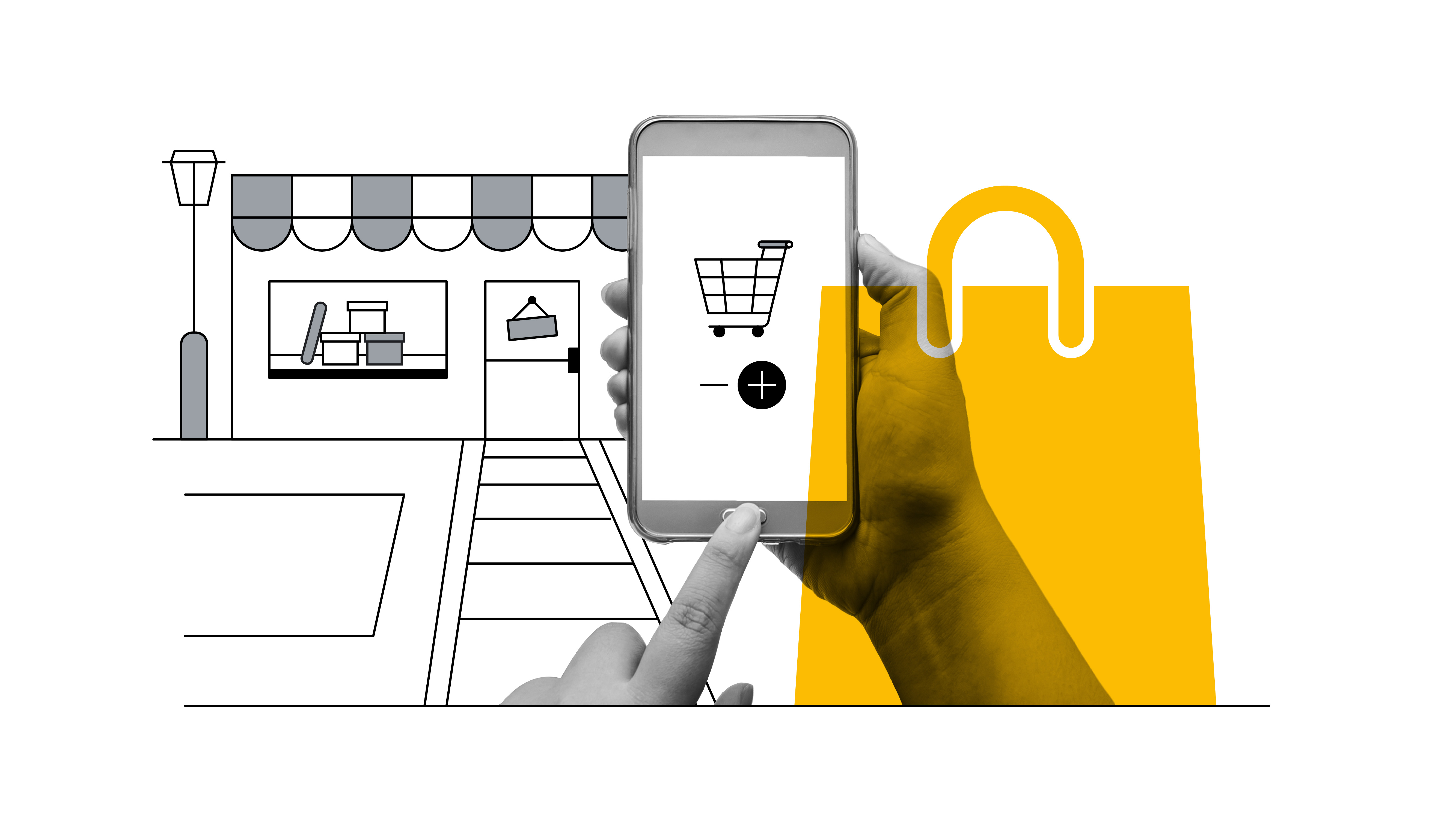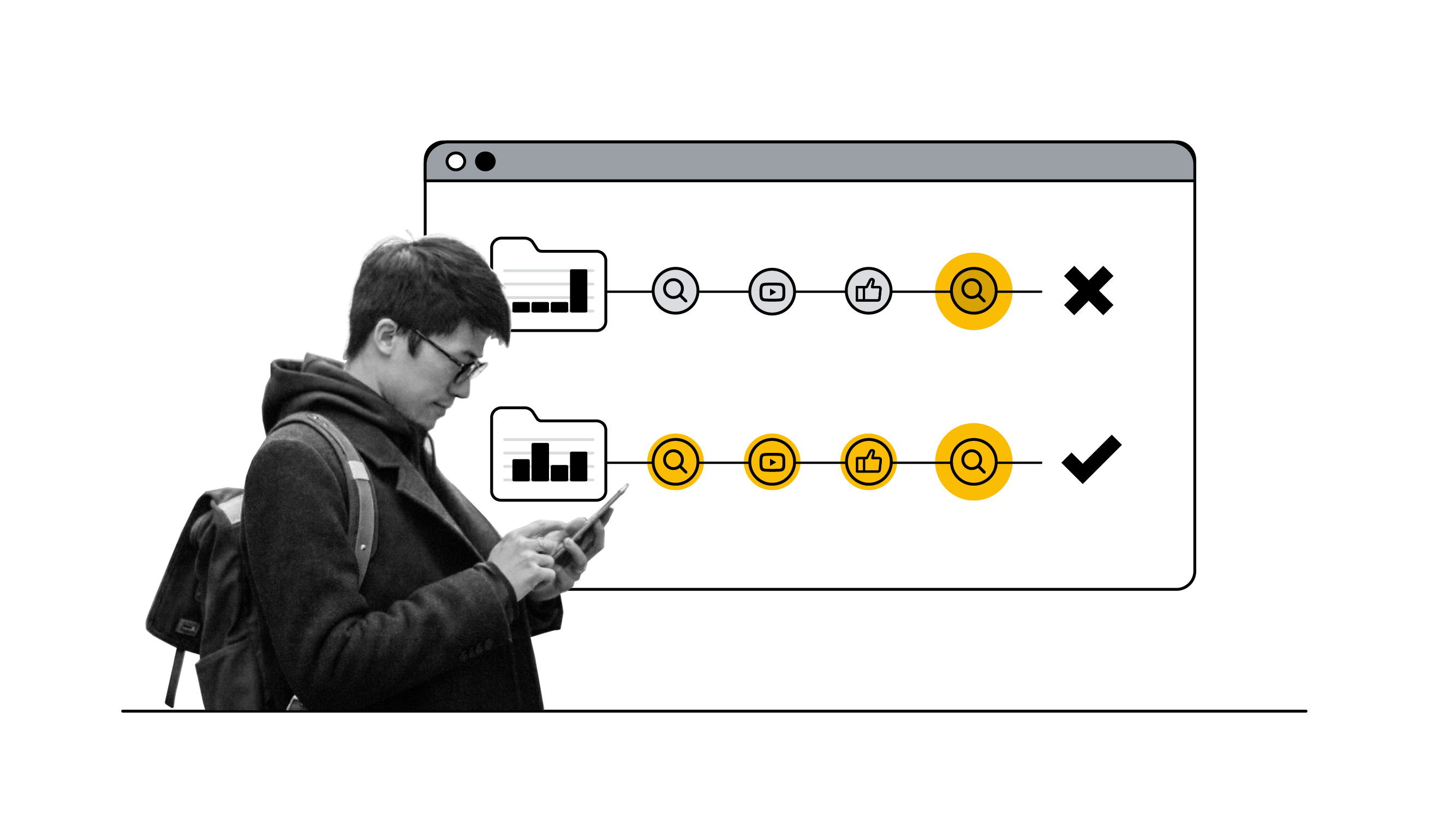Data vs. Audiences
Today, we are seeing a major shift occurring in digital marketing: we are transitioning from a buying approach focused purely on inventory (i.e. I want TV, Social, Video, Search, etc.) to one built on audiences (Who are my core consumers? What is their profile? How do I reach them irrespective of where they are?). That shift has far-reaching implications across the entire marketing value chain, including:
- Insights: How do I identify my core consumers?
- Assets: How do I personalize my messages with the right insights?
- Creative Storytelling: How do I orchestrate a journey of creatives to users?
- Media Planning: How do I target more precisely to improve performance?
- Measurement: How do I measure holistically and collect data across the consumer journey?
No Strategy + No Starting Point = ?
Today, all of this (and more), is powered by data. In my experience with brands in the Middle East, in the numerous discussions we’ve had about their data strategy, or in workshops we’ve conducted to identify their consumers, one opinion comes back in almost every session:
I HAVE NO DATA
The reality is that marketers typically have a lot to start with. If you have a website running analytics, you have a great tool to understand who your consumers are. If you’ve been running media for over a year, you’ve collected a great deal of signals of consumer behavior and interaction to power your next campaign. If you work with a media partner, you have access to insights that allow you to build a better consumer profile of users in MENA. So why is the belief of “I have no data” so deeply entrenched?
The Data-Driven Marketing Starter Kit
My personal conviction is that we approach data as an all-or-nothing play: “Either I have an extremely sophisticated data strategy, with multiple data inputs, complex tech infrastructure, or I should keep doing what I do today”. This black and white view of data might be at the heart of why many of us as marketers have left the data discussion on the table. It seems complex, overwhelming, and foreign. But it needn’t be. We need to look at data-driven marketing as a spectrum, and there is lots of room to play in the middle, regardless of what you assume you “have or do not have” when it comes to data.
So where do we begin? There are three essential tasks for every marketer:
1- Identify your brand’s audiences
You have at your disposal multiple sources of audience insights: your website, your media buying, your media partners. Start from there. Organize a brainstorming workshop to review your data together, invite your partners, and build out a powerful audience segmentation. Look for audiences who have positively interacted with you, are part of your category, and know that these are the ones that are most receptive to your brand message. With this, you should have built your brand’s consumer segments. Get ready, as it you might be surprised once you make decisions based on data, vs. ones based on our assumptions as a brand. Put these audiences at the core, and see how to recruit more consumers that resemble them.
2- Experiment with messaging personalization
With your audiences in hand, think about content. How do I make it resonate with these users? How do I make sure that my product fits seamlessly into their needs? The closer I demonstrate to users that my product can solve a critical tension point in their lives, the more likely they are to be receptive to my message. And in a world cluttered with messages, this is essential. You can go with the simple customization route (where even with this, we saw a ~40% VTR improvement), or go all the way.
3- Extend the journey of your audience through a story
Brands today have the opportunity to touch base with consumers throughout the year, rather than just appearing during key seasonal moments. After all, what we know today is that (1) consumers are always looking for your product and (2) we are able to deliver more integrated experiences for users by taking them on a journey. Think about mapping a series of messages to help build your consumer funnel and continuously drive users towards your product.
You’re on a journey
Marketers have enough data to start today. Yes, the ultimate ambition is to become a complex multi-moment, data-driven organization, but we should keep this as an end goal - not a baseline. The best way to achieve anything with data-driven marketing is through incremental steps. With every new approach, you will learn and grow as a marketer, your organization will mature, and you’ll understand what needs to be done next. You should see yourself on a data-driven journey, where as long as you do better than you did before, you are well on your way.







